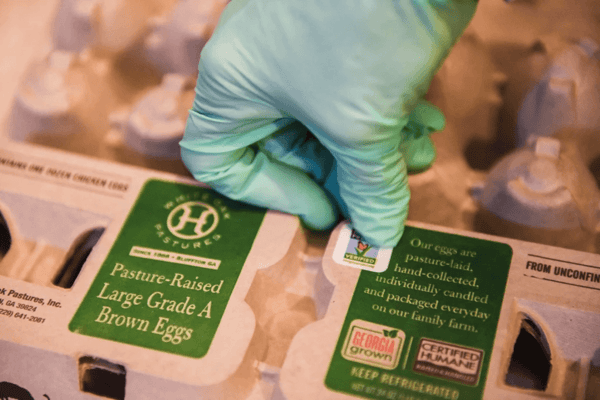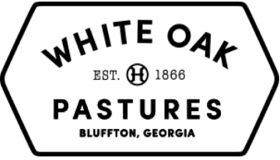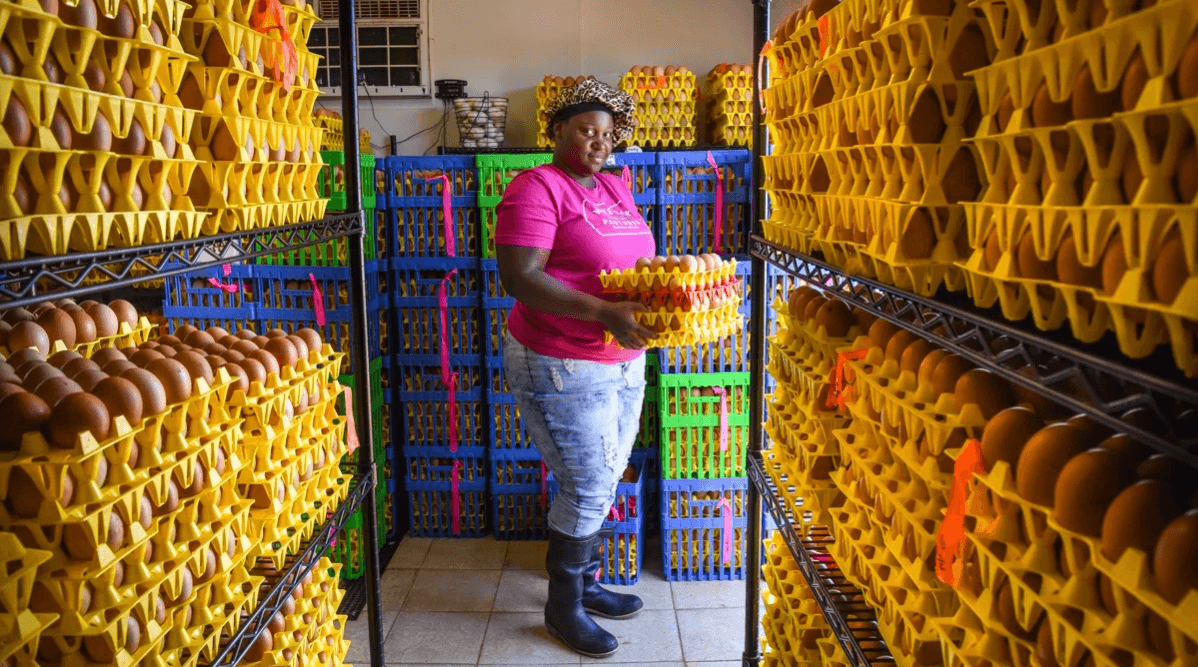
The White Oak Pastures egg team provides our customers with the freshest, healthiest, most wholesome eggs on the market, but it's not easy work.
There are a lot of steps in between our laying hens laying the eggs in our pasture and the eggs arriving at your doorstep. Ever wondered what it takes to bring our pastured chicken eggs to your plate?
Collecting eggs from pasture
Our pasture-raised laying hens live on our pastures, unconfined, roaming wherever they would like, 365 days a year. They get their nutrients from foraging bugs and grubs in the pasture, and we supplement their diet with a non-GMO grain mix to enable them to thrive. Proper light, shelter, diet, and health are crucial to the production process in order to provide high-quality eggs (with a vibrant yolk!).
We provide a carport shelter for our laying hens, complete with nesting boxes where they can lay their eggs. Our poultry crew works to keep these nesting boxes clean and comfortable for the hens.
Our pasture-laid eggs are collected from these nesting boxes by hand (as opposed to the automated gathering belts used by most production facilities). This is very time consuming, as our team gathers approximately 3,000 eggs per day.
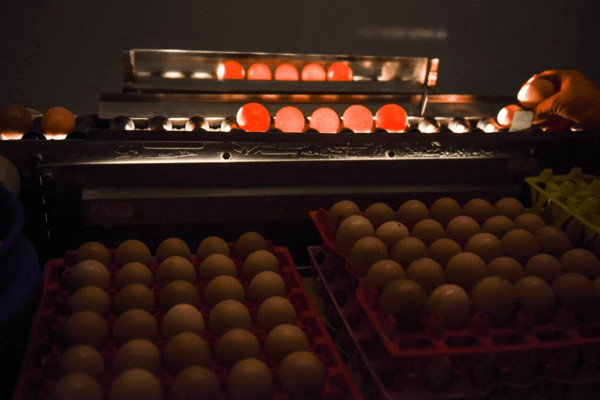
Candling eggs
Once we gather the eggs from our pasture, we start by "candling" each egg. Candling uses a bright light behind the egg to observe the details inside, checking for quality. The candling process is named for the original method, which used the light from candles. Today, candling is done with modern candling lamps with a concentrated light beam.
Our candling process consists of carefully placing the eggs on a mini conveyor belt that rolls them in front of a light, allowing us to see through the egg shell so we can remove any eggs that are rotten, fertilized, or have a loose yolk or blood spot. We also inspect the albumen and the air cell. If the egg does not meet the specified requirements, it is considered a reject, or a “bad egg”.
These bad eggs, along with any eggs that are too large or small to fit into our grading system, are a special treat for our hogs, adhering to our farm's zero waste principal.
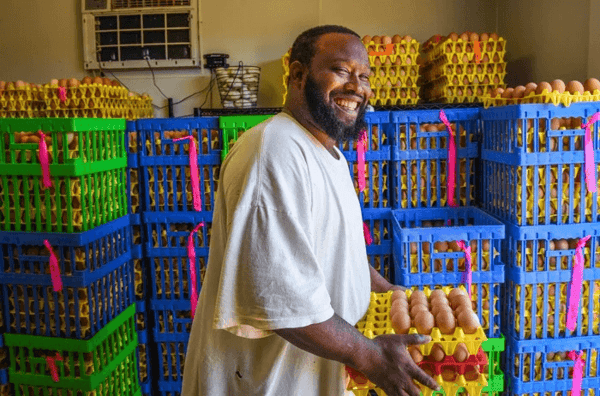
Washing or not washing our eggs
After the candling, the eggs continue on the mini conveyor belt to our washing and packaging process. We have two processes for our eggs, depending on the destination:
For eggs bound for Whole Foods and our other grocery partners, we are required to wash our eggs with a water and sanitizer mix. This means that the natural "bloom" coating around the porous shell is removed, and the egg pores are no longer protected. The eggs are then dried to prevent bacteria from entering the pores.
For eggs that we ship to our customers, we do not wash off the natural bloom, and instead simply wipe them down. This allows our unwashed eggs to keep their protective layer, which means they can be stored at room temperature and last even longer in the refrigerator (check out more about unwashed eggs here).
Delivering the eggs to you
Finally, our eggs are electronically weighed, divided into different sizes, and packaged. Some of our eggs are sold to our grocery partners in dozen-egg cartons. Others are bound for our online store inventory, where we offer shipments of four dozen pastured eggs.
Whether you visit us on the farm, order online, or buy at a grocery store, when you buy White Oak Pastures eggs, you are getting pastured, fresh eggs that were gathered by hand, carefully inspected, and guaranteed to be tasty.
